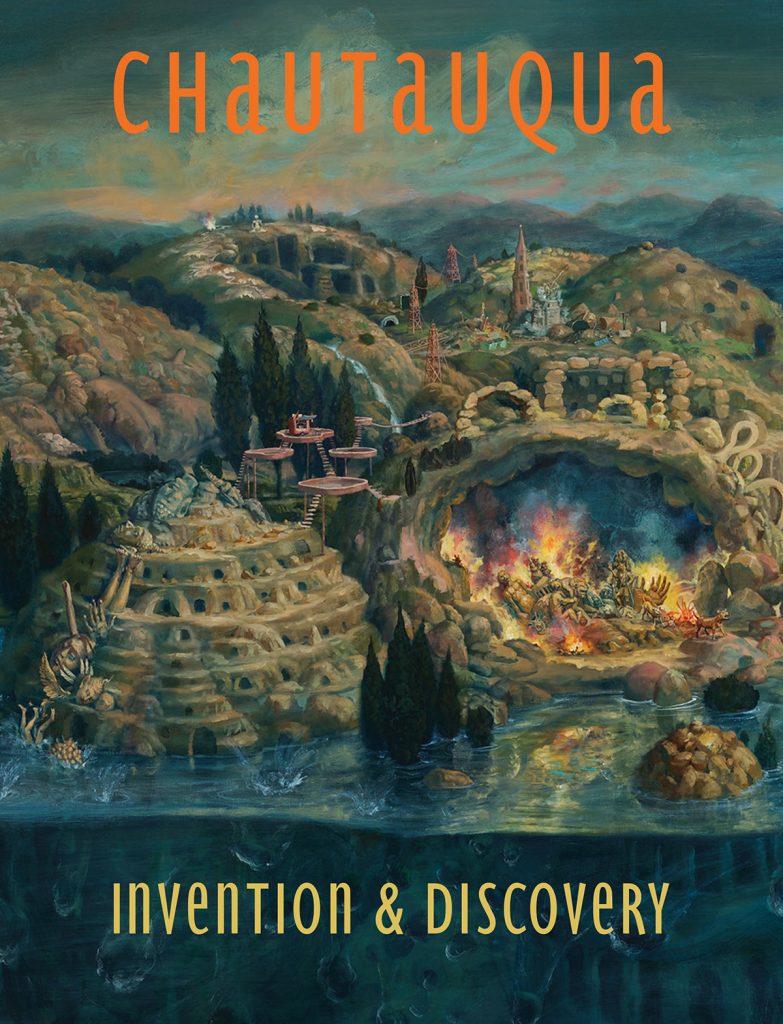In 2007, on the day of her wedding, Jill Gerard got a husband — and a job offer.
Right before she was about to marry Philip Gerard, she received a different kind of proposal from Diana Hume George.
“(Diana) said, ‘I know you guys are getting married in an hour, but I have a question to ask you,’ ” Gerard said.
George, a contributing editor for the Chautauqua literary journal, knew the Gerards loved Chautauqua and were big proponents of its mission. She asked if they would be willing to take on the responsibility of editing the journal. George thought with Philip’s literary connections and sensibility and Jill’s attention to detail, they would be a perfect fit to serve as co-editors.
The Gerards took the job, and have overseen the production of 10 issues of the journal since 2007. Jill started her tenure as program director of the Writers’ Center this season.
The first issue they worked on as editors was an anniversary-themed issue, celebrating the Chautauqua Writers’ Center’s 20th year. She and Philip got in touch with past writers-in-residence to see if they’d like to contribute to the issue.
“In some ways it was a real gift, because we didn’t have to worry about theme, or how we wanted to arrange sections,” Gerard said.

Once that first issue was completed, Gerard said she and Philip began to think about how they could make Chautauqua more connected to the four pillars of Chautauqua Institution: arts, education, religion and recreation. Their solution was dividing the journal into four major sections named “Life in Art,” “Life Lessons,” “Life of the Spirit” and “Life at Leisure.” They also added a fifth section, titled “Young Voices,” for writers between 12 and 18 years old.
“We really worked hard to have it mesh with the four pillars,” Gerard said.
The production of the journal is tied to the publishing lab at University of North Carolina Wilmington, which offers undergraduate and graduate students an opportunity to oversee an issue of the journal to completion. Under the Gerards’ supervision, the students generate a theme, read and evaluate submissions, take part in the editorial process, and design and publish the final product.
“The whole thing is unique in that it’s a partnership between a private institution and a public university,” Gerard said.
Both the university and the Institution offer scholarships for students in the class.
Completing issues of the journal is an ongoing process, Gerard said. The journal’s staff started reading in January for the issue that will be published next summer.
“In 2017, we’ll read in spring and fall for the 2018 issue, and then in the spring of 2018 we’ll start reading for the 2019 issue — but we’re building the 2018 issue,” Gerard said. “So we’re always working.”
Gerard said creating an issue of Chautauqua is a “community- and team-minded” process, and that there’s a lot of freedom in terms of what the journal can be. The staff begins by finding a theme, and then they evaluate submissions to see what will fit best.
“We try to pick something that will resonate with those four different sections, but also a theme that will give wide possibilities of interpretation,” Gerard said.
Hundreds of submissions are received each semester, Gerard said, with the number falling somewhere between 400 and 600 per issue. The “mathematics of publication” can be frustrating at times, Gerard said, but the staff does get to decide on the page count and look of the journal. Inside art for each issue comes from the Institution archives.
One challenge the journal faces going forward is marketing, Gerard said. She said the staff is working on raising awareness of the journal and making it more widely known, both on and off the grounds.
Part of raising awareness is getting the journal in people’s hands. Gerard feels that will work well with Week One’s theme of “Invention,” as the theme of the journal’s most recent volume is “Invention & Discovery.” Gerard said in a busy week, she hopes people get a chance to slow down and check it out.
“It’s the sense of paying attention to the world that gives us inspiration,” Gerard said. “My hope is that is part of what is inside any issue of the journal — a way to slow down, get engrossed in someone else’s sensibility of the world, and to shake us up a little bit.”
Gerard said that’s what she loves about working on Chautauqua.
“It’s a really interesting way to take Chautauqua home with you,” Gerard said.




